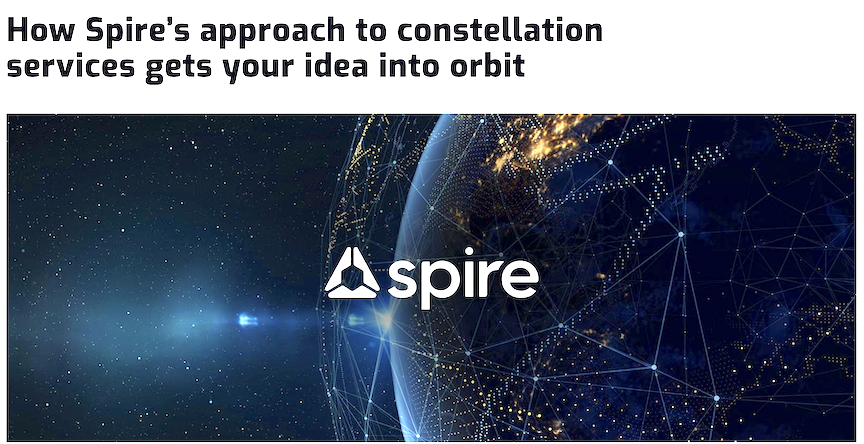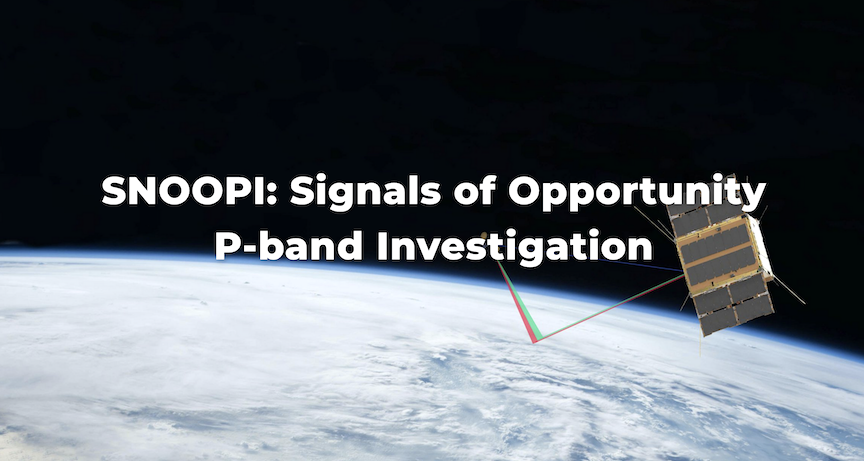
Spire Global, Inc. (NYSE: SPIR) (“Spire” or “the Company”), a global provider of space-based data, analytics and space services, announced today the continuation of its participation in NASA’s Commercial Smallsat Data Acquisition (CSDA) Program with a new contract extension. The award is in support of NASA’s SigNals of Opportunity: P-band Investigation, or SNOOPI mission. The Purdue University and NASA team, led by Professor James Garrison, will launch a satellite into low Earth orbit (LEO) to detect and analyze P-band radio signals for the purpose of measuring root-zone soil moisture on Earth.

As part of the mission, Spire performed a custom collection of ultra high frequency (UHF) and P-band data for the SNOOPI team. The lower frequency of P-band signals allows the radio emissions to penetrate farther into the soil than L-band signals, enabling the team to obtain measurements deeper below the surface when compared to modern L-band remote-sensing techniques employed by NASA’s Cyclone Global Navigation Satellite System (CYGNSS).
“The SNOOPI mission is the first demonstration of measuring root-zone soil moisture from space using signals of opportunity that are important for detecting early drought warnings as well as crop-yield forecasts,” said Kamal Arafeh, Senior Vice President of Global Sales, Spire. “We are honored to work with NASA and other government agencies worldwide to show how scientific innovations using space-based data can help humanity measure, adapt to, and mitigate the impacts of climate change.”
“Spire’s UHF collection, which we believe to be the first ever collection of reflected P-band signals in orbit, enabled the SNOOPI team to reduce risk and check our basic working principles prior to our launch,” said Jeffrey Piepmeier, Chief Microwave Instrument Engineer, NASA’s Goddard Space Flight Center. “Working with Purdue University, we continue to advance the signals of opportunity technique, which we hope leads to the first satellite remote sensing of root-zone soil moisture, which is the water contained in the top meter of the soil where it is absorbed by plants, a very important variable for applications such as agricultural production forecasting and flood prediction.”
Through the CSDA Program, NASA has integrated Spire data into its research and applications portfolio by using space-based data to investigate water and sea ice levels in the polar regions, estimate the height of the Planetary Boundary Layer (PBL), and discern daily variability of thermospheric density at satellite flight level. NASA also noted that Spire data has shown positive benefit to its GEOS Atmospheric Data Assimilation System, which uses space-based data to analyze the Earth’s atmosphere by assimilating the data into its Earth modeling and analysis system. As one of the original vendors for the CSDA Program, Spire provides NASA yearly updates to the scope of work under this agreement to ensure alignment of data to the agency’s needs.
SNOOPI is led by Purdue University for NASA’s Earth Science Technology Office and implemented by NASA’s Goddard Space Flight Center with instrument hardware and technology validation contributions from NASA’s Jet Propulsion Laboratory.
